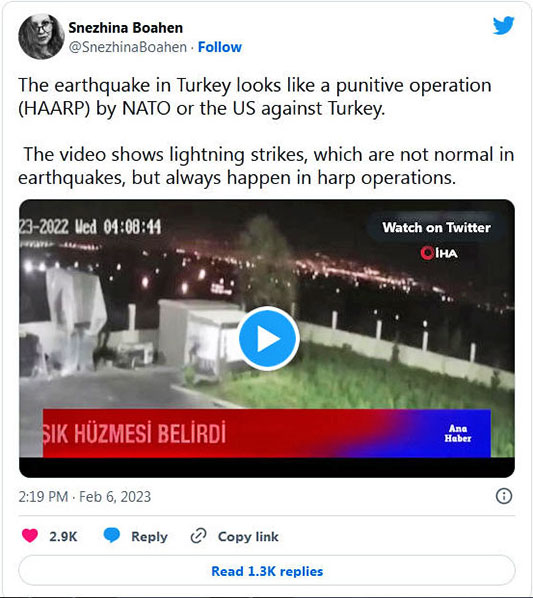|
Information sent by
CFGO Getty Images
But the greater mystery here may be just how the conspiracy theorists landed on a program that's designed to study the atmosphere having an impact below the ground.
The Air Force Research Laboratory owns the HAARP research facility, located near Gakona, Alaska, which was constructed in the 1990s and is now operated by the University of Alaska Fairbanks.
Researchers at HAARP use a powerful high-frequency transmitter and an array of 180 HF crossed-dipole antennas to temporarily disrupt the ionosphere - the outermost layer of Earth's atmosphere above the mesosphere, about 50 to 400 miles from Earth's surface - in hopes of yielding potential communications and surveillance benefits.
The ionosphere features a high concentration of ions and free electrons that reflects radio waves. And that's where people start using their imaginations.
The conspiracy theorists believe that HAARP, for some reason, causes an increase in lightning across the world, which somehow then leads to earthquakes like the ones in Turkey and Syria.
It seems that these believers like to tie HAARP to any natural disaster, simply saying that the U.S. or global partners can place undue influence on all natural events simply by employing HAARP's capabilities.
Video...
The transmitted frequencies from HAARP are possible in the range of 2.7 to 10 MHz, and since the antennas form a sophisticated phased array, the beam can take many shapes, scan over a wide angular range, or split into multiple beams.
In all, the HAARP facility uses 30 transmitter shelters, each with six pairs of 10-kilowatt transmitters. Scientists at HAARP use HF radio transmitters to heat small regions of the ionosphere to observe the effects.
Using HAARP speeds up a process that can take satellites weeks or years to observe.
Scientists observe the physical processes that occur within the excited regions.
|



